Ortrud Uckermann
Learned end-to-end high-resolution lensless fiber imaging toward intraoperative real-time cancer diagnosis
Feb 28, 2022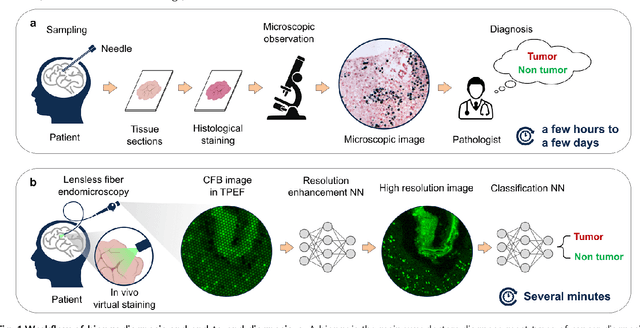
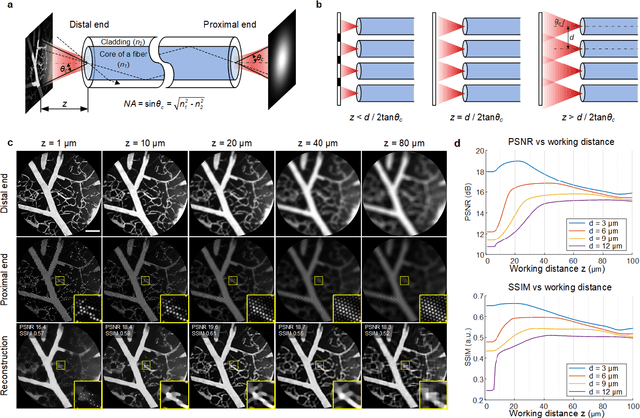
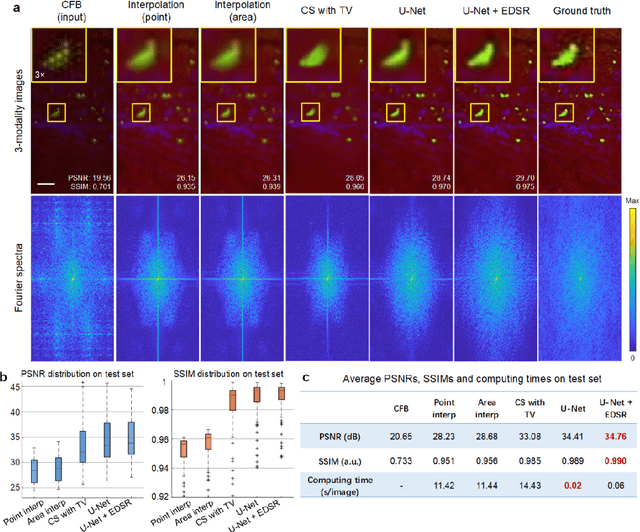
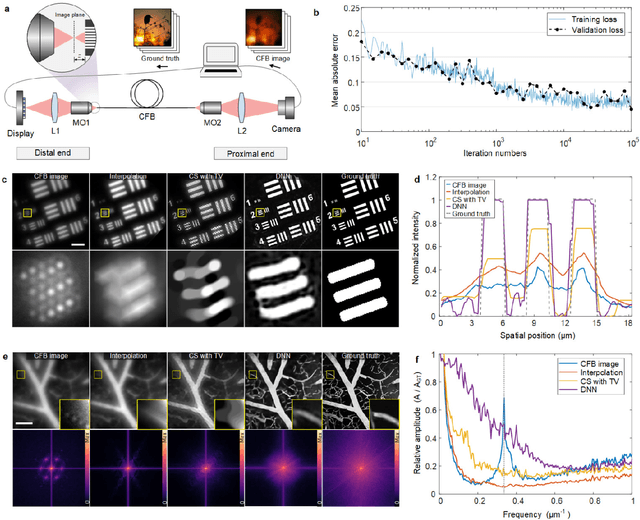
Abstract:Endomicroscopy is indispensable for minimally invasive diagnostics in clinical practice. For optical keyhole monitoring of surgical interventions, high-resolution fiber endoscopic imaging is considered to be very promising, especially in combination with label-free imaging techniques to realize in vivo diagnosis. However, the inherent honeycomb-artifacts of coherent fiber bundles (CFB) reduce the resolution and limit the clinical applications. We propose an end-to-end lensless fiber imaging scheme toward intraoperative real-time cancer diagnosis. The framework includes resolution enhancement and classification networks that use single-shot fiber bundle images to provide both high-resolution images and tumor diagnosis result. The well-trained resolution enhancement network not only recovers high-resolution features beyond the physical limitations of CFB, but also helps improving tumor recognition rate. Especially for glioblastoma, the resolution enhancement network helps increasing the classification accuracy from 90.8% to 95.6%. The novel technique can enable histological real-time imaging through lensless fiber endoscopy and is promising for rapid and minimal-invasive intraoperative diagnosis in clinics.
Coherent False Seizure Prediction in Epilepsy, Coincidence or Providence?
Oct 26, 2021

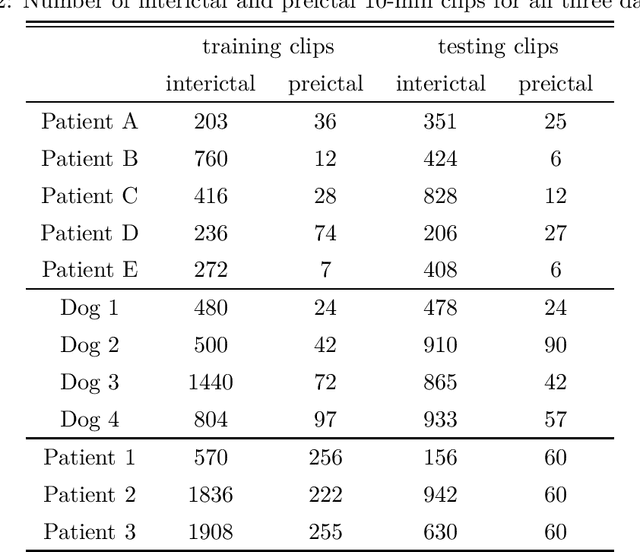

Abstract:Seizure forecasting using machine learning is possible, but the performance is far from ideal, as indicated by many false predictions and low specificity. Here, we examine false and missing alarms of two algorithms on long-term datasets to show that the limitations are less related to classifiers or features, but rather to intrinsic changes in the data. We evaluated two algorithms on three datasets by computing the correlation of false predictions and estimating the information transfer between both classification methods. For 9 out of 12 individuals both methods showed a performance better than chance. For all individuals we observed a positive correlation in predictions. For individuals with strong correlation in false predictions we were able to boost the performance of one method by excluding test samples based on the results of the second method. Substantially different algorithms exhibit a highly consistent performance and a strong coherency in false and missing alarms. Hence, changing the underlying hypothesis of a preictal state of fixed time length prior to each seizure to a proictal state is more helpful than further optimizing classifiers. The outcome is significant for the evaluation of seizure prediction algorithms on continuous data.
 Add to Chrome
Add to Chrome Add to Firefox
Add to Firefox Add to Edge
Add to Edge